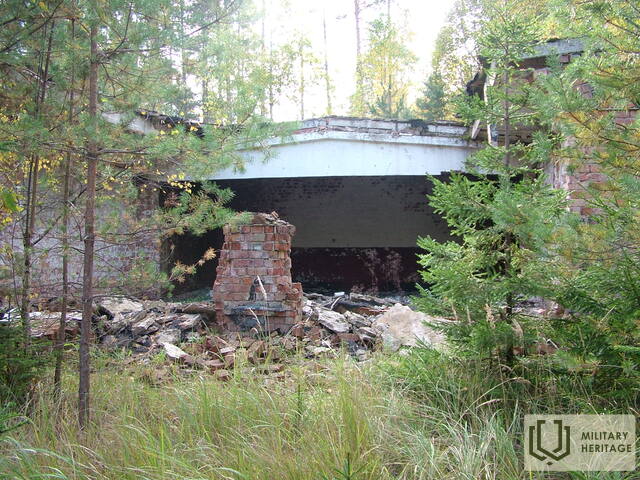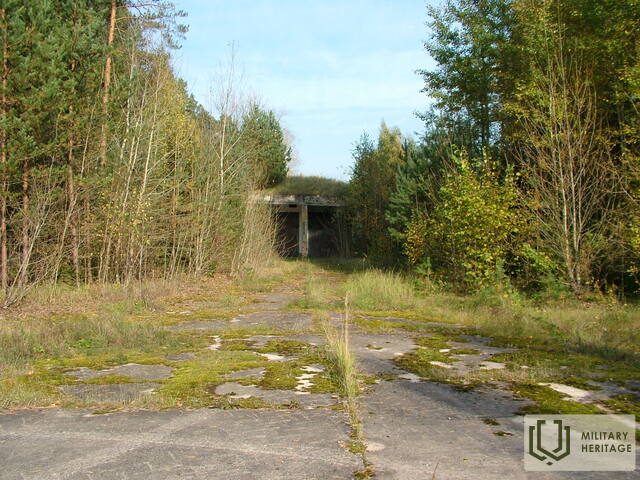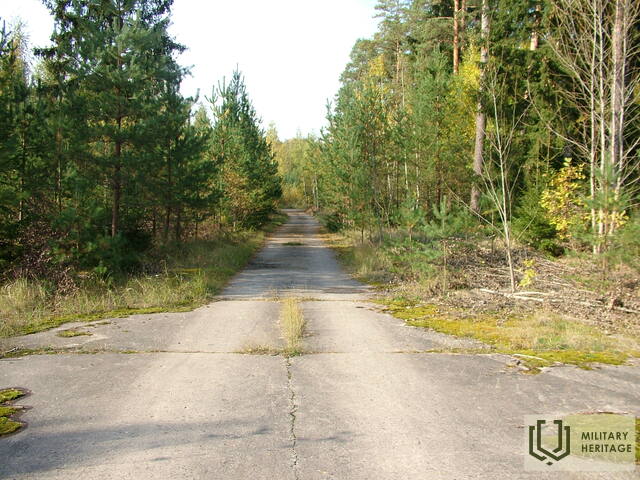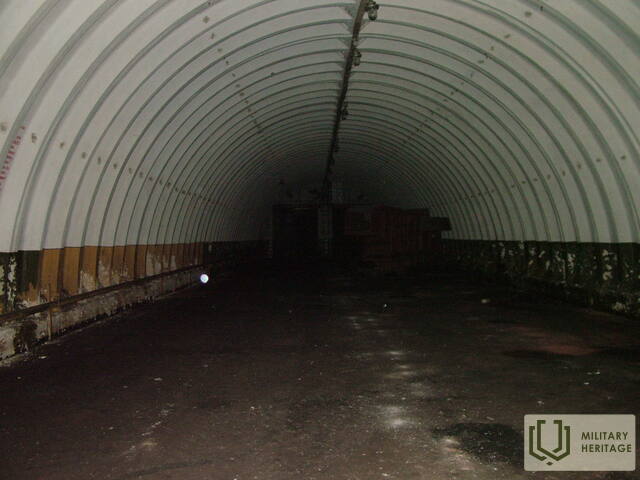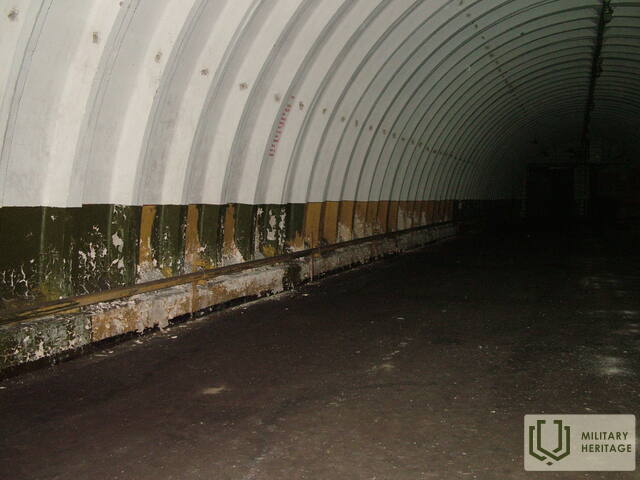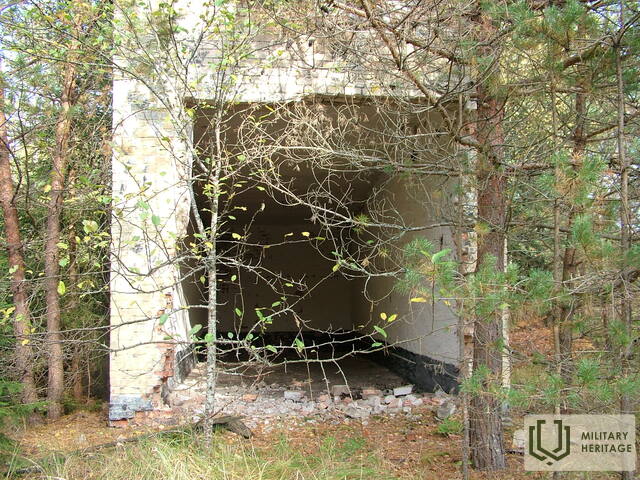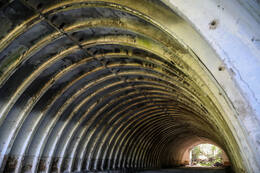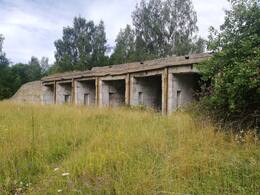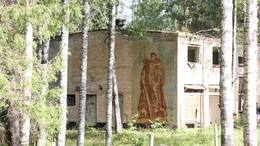Tērvete missile base
The Tērvete missile base was one of the secret strategic military bases of the USSR, where R12 ballistic missiles were deployed.
The Tērvete missile base is located in the forest massif of Dobele municipality, Tērvete parish, southeast of the Tērvete nature park parking lot. The missile base with all the infrastructure occupied an area of 330 hectares, and the chemical part an area of 6 hectares. The building part of the military facility was transferred to the Tērvete municipality in 1994, which divided it into objects for their further management. Radioactivity measurements (gamma-background) have been carried out at the facility and their indicators comply with the existing norms. Driving along the road, past the Tērvete cemetery, past the Labrenči building (a former five-story residential building for Soviet Army officers) where the road leads to the former missile base, the first thing we see is the former checkpoint and a brick wall, on which 10-15 years ago there was a face of a Soviet soldier and a star. Driving further into the base area, we come to a residential building that is inhabited, and the military base's motor vehicle garages, which today belong to various owners. The territory and the road are blocked, as they are private property. The missile base can also be accessed from the Tērvete Nature Park parking lot through the forest. Behind the garages along the road are hangars where R-12 ballistic missiles with missile launchers were stored. In total, the missile base has four large hangars, and two smaller ones, presumably command posts. To the northwest of the missile hangars are four missile launch platforms. The missile base is classified as a "Dvina" type configuration missile base with four missile shafts.
The owner of "Baltu rota", jeweler Vitauts Straupe, who served at the base from 1985 to 1987, remembers: "That mentioned brick wall is my work from Dembelis. I was given a task but was not given any materials. They only promised to let me go home from the Soviet Army when the object was ready. The cement and aerated concrete, from which the star and the soldier frozen in ice are carved, were obtained from the Riga cement factory, where my childhood friend worked at the time. More precisely, we drove there in an army car and got it. But to get to the bricks for that wall, we demolished one layer of the car park's brick fence at night. It wasn't difficult, because someone must have kicked over the cement while building it and you could almost pick up the bricks with your bare hands."
Related timeline
Related topics
Related objects
Barta missile base
Paplak Regiment. Barta - South, Barta - North. The base has been destroyed by man and nature. The buildings are taken back by the forest, the missile transport trucks and the missile hangars themselves are demolished. The communication centre has also been destroyed and most of the metal launch platforms have been dismantled.
According to official information, the following Soviet army units were located in the municipality of Barta:
49028 - 279. BKF naval transmitting centre
25026, 49393 - 30th BKF ship missile and nuclear warhead depots
49281 - Communications Department
20480 - 523rd Communications Centre Sub-unit
1994, leaving Latvia (The last military personnel to leave Latvia, the Barta missile base equipment, left the port of Liepaja on 31 August 1994.), submitted by the North-Western Troops Group of the Russian Federation. During the survey of the Barta missile base area, we also found the launch sites of the R-5M (8K51M) ballistic missile (NATO classification - SS-3 Shyster) with its adjacent command bunkers. The R-5M (8K51M) missiles with nuclear warheads were the first to be deployed by the occupying forces in Latvia in 1954, in the Barta forest of the Liepāja district. By decision No 700-330 of the Ministry of Defence of the USSR of 2 July 1985 (!), 2 623 hectares of land were allocated to troop unit No 42341 (50th Rocket Army in Smolensk, k/d 55135) in the Barta Forest. Two divisions of the 117th Rocket Regiment are stationed there. Each division has 4 missiles. On 18 September 1959, the Army requests a further 385,25 ha for five sites near Barta Brienampurva. Gravel for the construction of the base and for filling and camouflaging the hangars was brought from the nearby Krute quarry. Farmers are evicted from the houses of Kalnāji, Placēņi, Purviči, Zemturu, Purvu, Knīpupju, Mazturu, Birzmali in the municipality of Barta. The losses for the liquidation of 8 farms shown in the archive documents are only 154 711 roubles. All the constructions of the bases were taken to Barta only at night, so that nobody would see them. But the inhabitants of Barta have always known: when the army starts grading the roads, they will be carrying something.In 1968, the surface-launch rocket divisions of Barta were disbanded. The modernised shaft rockets (R-12 and R-14) are not deployed in Barta because the site is located in a marshy area.
Piiri Missile Base
This former missile base is situated on state forest land in Piiri on the island of Muhu.
It was completed in 1963. To neighbouring village Liiva the missile base for S-125 system was established at the end of 1960s.
The air defence missile division was designed to defend the western border of the Soviet Union. The division comprised around 16 officers and 60 conscripts. The base had an electric generator, a bunker, a command centre and hangars for S-75 missiles. There was also a separate hangar, presumably for a 3 nuclear warhead missile (probably an OTR-21 Tochka) missiles.
The missile hangars, the garages, the bunkers and the ruins of the command centre and a pillbox with firing holes are what remain of the base today.
Soviet Army Missile base in Zeltiņi
The former Soviet Army Missile Base is located in Medņukalni, Zeltiņi parish, Alūksne municipality. This nuclear missile base was a particularly secret military facility of the Soviet Army, and it operated in Zeltiņi, Alūksne municipality, from 1961 to 1989. The facility housed P-12 (8K63) and P12Y (8K63Y) surface-to-surface medium-range ballistic missiles with 4 launch pads. Their travel distance was 2,200 kilometres. During this period the army used barbed-wire to secure an area of about 300 ha less than a kilometre from the Sinole-Silakrogs P34 national regional highway. The living and top-secret areas have remained a legacy even today. Concrete roads lead to places hidden from the eye at that time: hangars, launch pads and bomb shelters. Various structures for the maintenance and servicing of nuclear missiles are located on an area of dozens of hectares. Facilities providing the area with the autonomous supply of power, water and heat were destroyed with the withdrawal of the army. After the army left, some of the equipment was handed over to the local municipality. Visitors currently have access to 20 ha of the former territory of the missile base, the south-western part of which is a tourist attraction. Tourists visiting the base can choose between the core exhibit about the history of the missile base, which is located in the Zeltiņi Museum, and a tourist route in the base area. Friends in a group of up to 12 people can enjoy a game of laser tag here.




